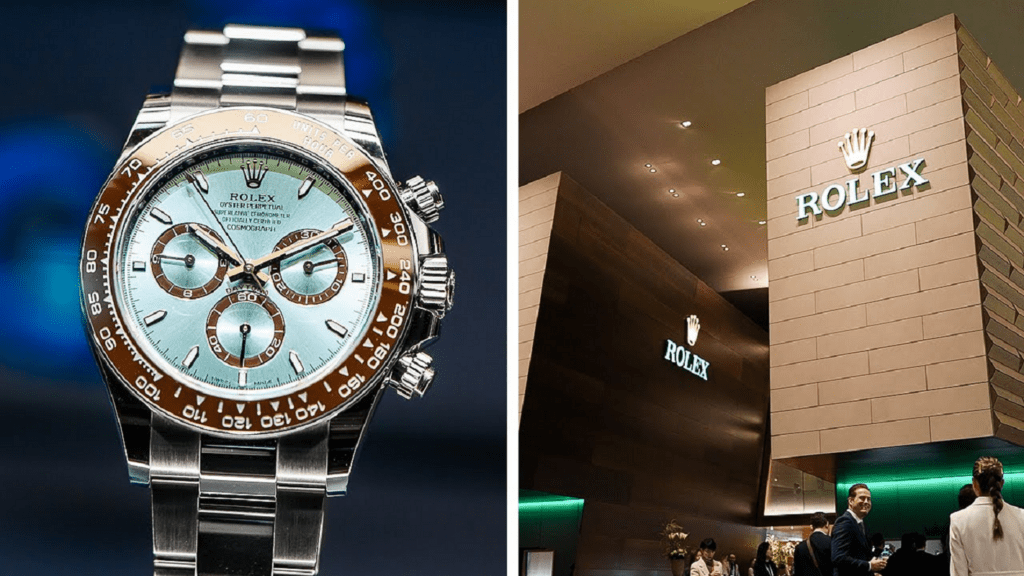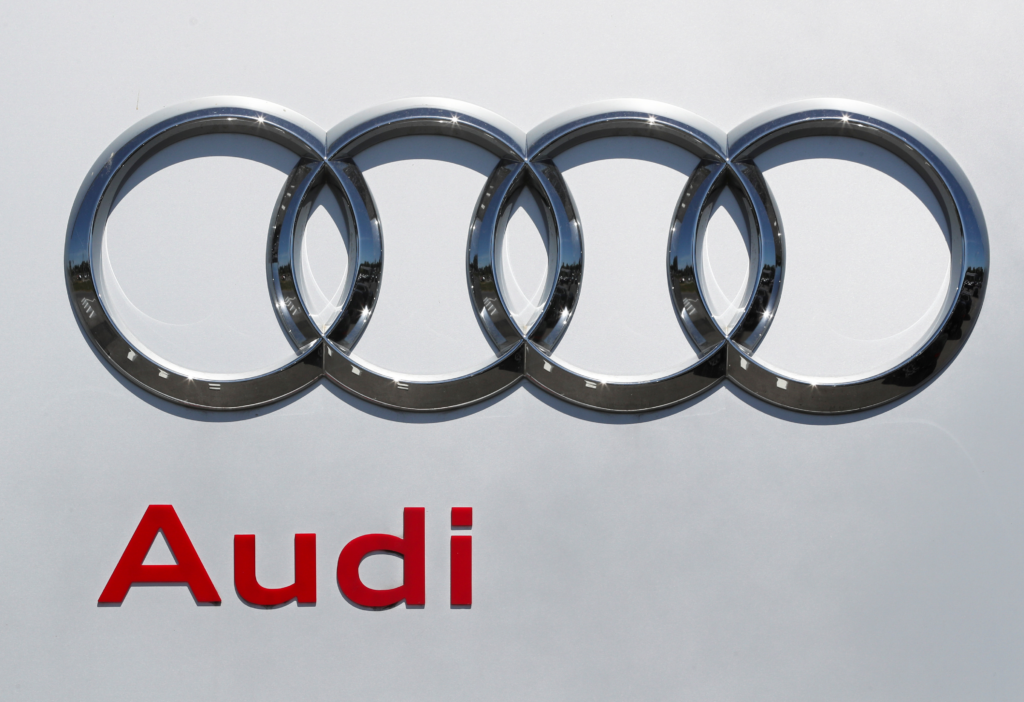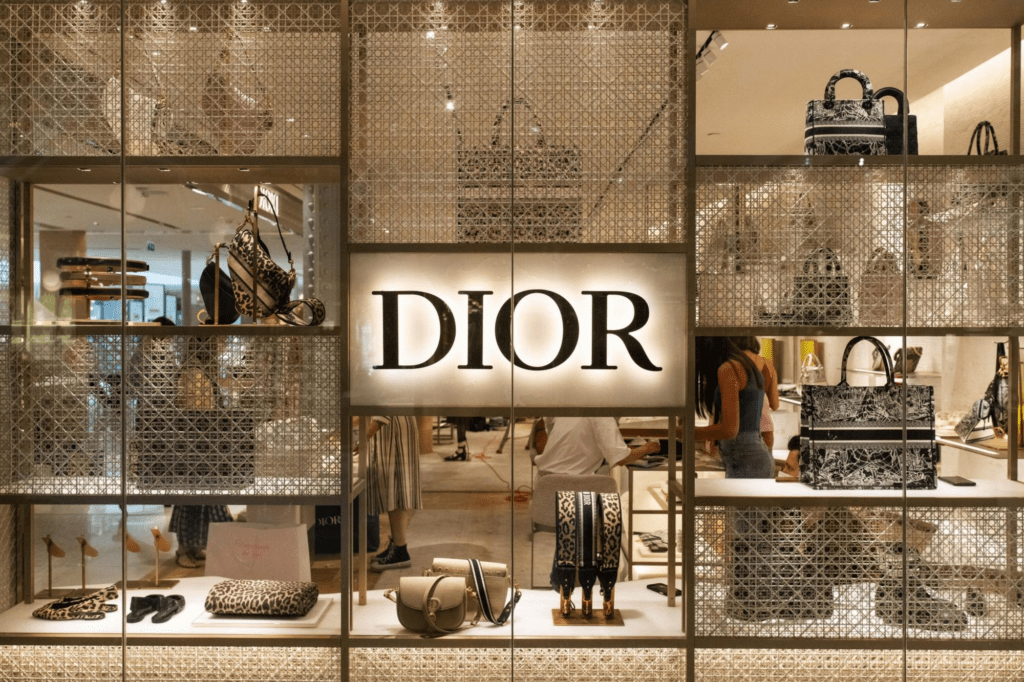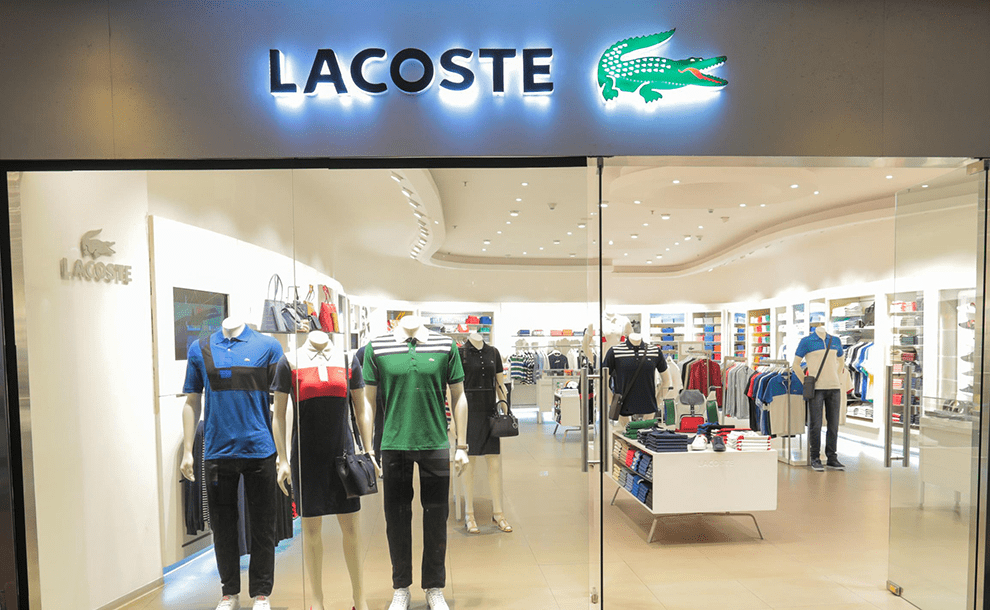Introduction
SWOT Analysis: In the world of luxury brands, few names stand as tall as Rolex, Audi, Dior, and Lacoste. These companies have not only solidified their positions in the market but have also emerged as symbols of timeless elegance, innovation, and craftsmanship. In this blog post, we will take a journey through the history of these iconic brands and explore the current business environment they operate in.
Rolex

Rolex, founded in 1905 by Hans Wilsdorf, is a Swiss luxury watchmaker known for its precision, luxury, and unrivaled brand reputation. From its inception, Rolex has focused on innovation and quality, becoming the first watch company to earn chronometer certification. The brand’s commitment to excellence extended to notable achievements, such as creating the first waterproof watch, the Rolex Oyster, in 1926.
Today, Rolex continues to thrive and is considered a benchmark for luxury timepieces. With a diverse collection of watches catering to a wide range of tastes, Rolex enjoys a strong global presence. Their timepieces are sought after for their precision, durability, and timeless design.
In the current business environment, Rolex faces both opportunities and challenges. The brand’s heritage and reputation provide a solid foundation, allowing Rolex to expand into emerging luxury markets and explore collaborations with renowned designers. However, competition from other luxury watchmakers and the risks associated with counterfeit products remain key challenges.
Lets have a look at the SWOT analysis of these companies
SWOT Analysis for Rolex
Strengths:
Brand heritage and reputation: Rolex has established itself as a symbol of luxury, craftsmanship, and prestige over the years.
Quality and durability: The brand is known for producing timepieces that are renowned for their accuracy and reliability, which has garnered customer trust.
Innovation: Rolex continually invests in research and development, bringing new technological advancements to their watches.
Weaknesses:
Limited product line: Rolex focuses primarily on luxury watches, which restricts its market share in other segments.
High price point: The exclusivity and craftsmanship of Rolex watches come with a premium price, making them unaffordable for many potential customers.
Inconsistent online presence: Rolex has been slow in enhancing its online presence, which limits its reach to a wider audience.
Opportunities:
Emerging markets: Rolex can tap into luxury markets in emerging economies, such as China and India, to expand its customer base.
Collaborations: The brand can explore collaborations with renowned designers and artists to create limited-edition timepieces, attracting a more diverse clientele.
Sustainable practices: Rolex can adopt sustainable practices, appealing to environmentally-conscious consumers who value ethical production.
Threats:
Counterfeit products: Rolex faces challenges from counterfeit watches, which can harm its brand reputation and sales.
Competition: The luxury watch market is highly competitive, with brands like Patek Philippe and Audemars Piguet vying for a similar target audience.
Economic downturns: Luxury brands are vulnerable to economic fluctuations, as customers’ purchasing power may decrease during the recession.
Audi

Audi, renowned for its premium vehicles and commitment to technological innovation, boasts a rich history dating back to 1909. The company’s four rings logo represents the merger of four automobile manufacturers in the early 20th century.
Throughout its history, Audi has carved a niche for itself by combining sophisticated design, engineering excellence, and cutting-edge technology. The brand’s dedication to innovation has resulted in groundbreaking advancements, including the introduction of Quattro all-wheel-drive and the integration of advanced connectivity features.
In today’s business environment, Audi finds itself operating in a competitive luxury car market. The brand faces the challenge of maintaining its market share while keeping up with evolving consumer preferences and stringent environmental regulations. However, opportunities lie in expanding the electric vehicle portfolio and capitalizing on emerging luxury markets, such as China and India.
SWOT analysis for Audi
Strengths:
Strong brand identity: Audi is recognized for its premium vehicles, innovative technology, and elegant design.
Engineering excellence: The brand’s commitment to engineering excellence sets it apart from its competitors.
Broad product range: Audi offers a diverse range of vehicles, catering to various customer preferences.
Weaknesses:
High maintenance costs: Owning an Audi can be expensive due to high maintenance and repair costs, which might deter budget-conscious consumers.
Limited electric vehicle presence: While Audi has introduced electric models, its electric vehicle portfolio is still limited compared to brands like Tesla.
Perception of being less exclusive: Audi is often perceived as being less exclusive than some other luxury brands, affecting its appeal to certain customers.
Opportunities:
Electric vehicle market: Audi can invest in further developing its electric vehicle lineup to capitalize on the growing demand for eco-friendly transportation.
Emerging markets: The brand can expand its presence in emerging markets like China, where luxury car ownership is on the rise.
Digital transformation: Audi can leverage technological advancements, such as autonomous driving and connectivity features, enhancing the overall driving experience.
Threats:
Intense competition: Audi faces fierce competition from other luxury car manufacturers like BMW and Mercedes-Benz, requiring constant innovation to maintain market share.
Economic fluctuations: Luxury cars are particularly vulnerable to economic downturns, as consumers may delay or avoid purchasing high-priced vehicles during recessions.
Environmental regulations: The tightening regulatory environment regarding emissions and fuel efficiency could pose challenges for Audi if not effectively addressed.
Dior

Christian Dior, founded in 1946 by Christian Dior himself, is synonymous with haute couture, luxury fashion, fragrances, and cosmetics. The brand immediately gained global recognition with its iconic post-war “New Look” collection, featuring glamorous and voluminous silhouettes.
Dior’s legacy has been driven by its ability to meld tradition with modernity, resulting in timeless yet innovative collections. The brand expanded beyond fashion to launch a range of beauty products, perfumes, and accessories, solidifying its position as a complete luxury brand.
In today’s business landscape, Dior faces the challenge of catering to a diverse customer base while maintaining its aura of exclusivity. Opportunities lie in capitalizing on emerging luxury markets, especially in Asia, and aligning with sustainability initiatives to appeal to environmentally-conscious consumers.
SWOT analysis for Dior
Strengths:
Iconic brand image: Dior is a global luxury brand known for its fashion, fragrance, and cosmetics.
Fashion Innovation: The brand consistently introduces new and trendsetting collections, capitalizing on its creative reputation.
Diverse product portfolio: Dior offers a wide range of products, including apparel, accessories, and beauty products, appealing to diverse consumer segments.
Weaknesses:
Price sensitivity: Dior’s luxury positioning may limit its accessibility to a broader audience, as some consumers may find its products unaffordable.
Dependence on international markets: Dior heavily relies on international sales, making it susceptible to geopolitical and economic uncertainties in various regions.
Social media presence: Despite being successful offline, Dior needs to enhance its social media presence to engage with younger audiences effectively.
Opportunities:
Emerging luxury markets: Dior can capitalize on emerging markets in Asia, especially China, where luxury consumption is rapidly growing.
Collaborations and partnerships: The brand can collaborate with celebrities, influencers, and other luxury brands to expand its reach and tap into new customer segments.
Sustainability: Dior can make further efforts towards sustainability, attracting environmentally-conscious consumers who value ethical fashion.
Threats:
Counterfeit products: Dior faces the risk of counterfeit products, which can harm its brand image and customer trust.
Fast fashion competitors: The rise of fast fashion brands poses a threat to luxury brands like Dior as they offer affordable options that capture current trends.
Changing consumer preferences: Evolving consumer preferences and shifting fashion trends could impact Dior’s long-established brand positioning if not proactively adapted to.
Lacoste

Founded in 1933 by tennis champion René Lacoste, Lacoste is known for its iconic crocodile logo and classic polo shirts. René Lacoste revolutionized tennis fashion by introducing the comfortable and stylish polo shirt, which became a symbol of sports elegance.
Lacoste’s success has been built on a dedication to quality, consistency, and a commitment to its sportswear heritage. The brand expanded its product line to include apparel, footwear, accessories, and fragrances, catering to a diverse range of customers.
In the current business environment, Lacoste faces competition from both luxury and sportswear brands. Diversifying its product portfolio, leveraging the athleisure trend, and emphasizing sustainability can provide growth opportunities for Lacoste.
SWOT Analysis for Lacoste
Strengths:
Brand heritage: Lacoste is known for its long-standing history, associated with its iconic polo shirts and crocodile logo.
Classic and timeless design: Lacoste’s products are often seen as a symbol of casual elegance, catering to a wide range of age groups.
Global presence: The brand has a strong global presence, with stores in over 120 countries, enabling it to reach a large customer base.
Weaknesses:
Limited diversified product portfolio: Lacoste primarily focuses on apparel and accessories, limiting its presence in other luxury segments.
Perception of being less exclusive: Lacoste is perceived by some consumers as a more accessible luxury brand, which might diminish its aspirational appeal to certain customers.
Overreliance on the polo shirt: While the polo shirt is iconic, Lacoste needs to diversify its product offerings to maintain its relevance in a competitive market.
Opportunities:
Athleisure market: Lacoste can leverage the growing athleisure trend by introducing more sportswear and activewear options, targeting a wider audience.
Sustainability: With increasing consumer demand for sustainable fashion, Lacoste can incorporate eco-friendly practices and materials into its production processes.
Collaboration with designers: The brand can collaborate with renowned designers to bring fresh perspectives and attract new customers.
Threats:
Competition: Lacoste faces competition from both luxury brands like Ralph Lauren and sportswear brands like Nike and Adidas, which offer similar products in different price ranges.
Counterfeit products: Lacoste’s popularity makes it vulnerable to counterfeit products, potentially damaging its brand reputation and sales.
Economic fluctuations: Luxury apparel is discretionary spending, making Lacoste’s sales sensitive to economic downturns.
How is SWOT analysis of Luxury brands different from conventional companies
SWOT analysis of luxury brands are generally different from conventional companies. The demand for these luxury companies are not conventionally defined by Demand-Supply cycles rather by scarcity and brand positioning, Here are more reasons as to why SWOT analysis is different
1. Brand image and perception: Luxury brands rely heavily on their brand image, exclusivity, and prestige. Their strength lies in building and maintaining an aura of luxury, which can become a significant advantage. The SWOT analysis of luxury brands takes into account the perception of the brand among affluent consumers and its impact on market positioning.
2. Emotional connection: Luxury brands often aim to establish an emotional connection with their consumers, going beyond functional benefits. SWOT analysis of luxury brands considers the brand’s ability to evoke emotions and create a sense of aspiration and desire among its target audience.
3. Limited target audience: Unlike conventional companies that cater to a broader target market, luxury brands cater to a niche, high-end consumer segment. SWOT analysis for luxury brands focuses on understanding the preferences, expectations, and purchasing power of this specific target audience.
4. High-quality and craftsmanship: Luxury brands are known for their exceptional quality, craftsmanship, and attention to detail. SWOT analysis of luxury brands emphasizes these attributes as strengths and analyzes how they contribute to the brand’s overall competitiveness.
5. Exclusivity and scarcity: Luxury brands often maintain an element of scarcity to enhance their desirability and exclusivity. This aspect is considered both in terms of strengths (creating brand desirability) and weaknesses (potential limited market reach).
6. Price positioning: Luxury brands typically operate at a higher price point than conventional companies. SWOT analysis of luxury brands accounts for the impact of high prices on perceived value, market demand, and potential weaknesses or threats related to affordability.
7. Image protection: Luxury brands face unique challenges in protecting their brand image from counterfeits, imitation, and dilution. SWOT analysis of luxury brands includes assessing the threats posed by counterfeit products and the need for robust brand protection strategies.
8. Influence of trends and fashion: The luxury industry is highly influenced by fashion and consumer trends. SWOT analysis of luxury brands examines their ability to adapt to changing preferences and embrace innovation while maintaining their timeless appeal.
9. Emotional buying motivations: Customers of luxury brands often make purchases driven by emotional and aspirational factors rather than practicality alone. SWOT analysis of luxury brands considers how emotional buying motivations can create opportunities, but also vulnerabilities if not effectively managed.
10. Exclusive distribution channels: Luxury brands often emphasize exclusive distribution channels, such as luxury boutiques or high-end department stores. The analysis acknowledges the strengths and weaknesses of these strategies and their impact on brand positioning.
Conclusion
Through this detailed SWOT analysis of Rolex, Audi, Dior, and Lacoste, we have gained valuable insights into their respective strengths, weaknesses, opportunities, and threats. By leveraging their strengths, addressing weaknesses, capitalizing on opportunities, and mitigating threats, these luxury brands can stay at the forefront of the dynamic luxury market. Understanding their position in the industry is crucial for formulating effective strategies and enhancing their overall brand performance
Samrat is a Delhi-based MBA from the Indian Institute of Management. He is a Strategy, AI, and Marketing Enthusiast and passionately writes about core and emerging topics in Management studies. Reach out to his LinkedIn for a discussion or follow his Quora Page
